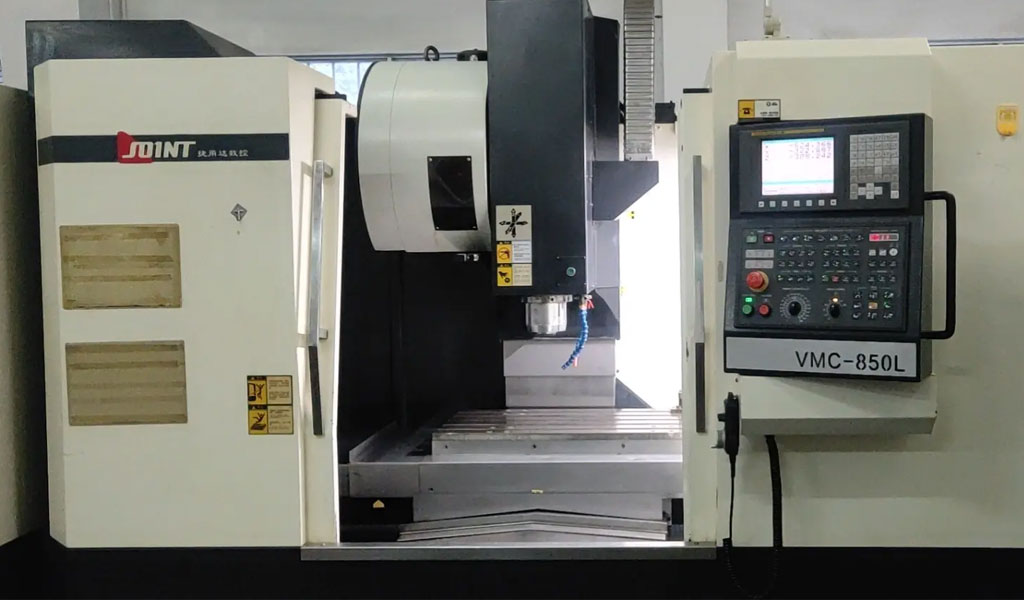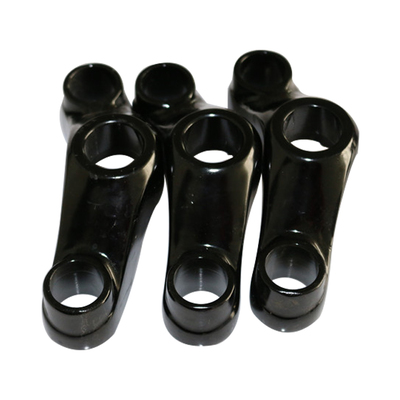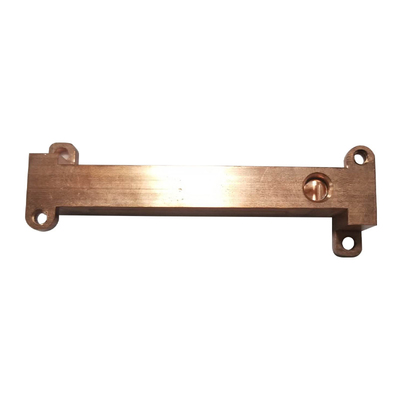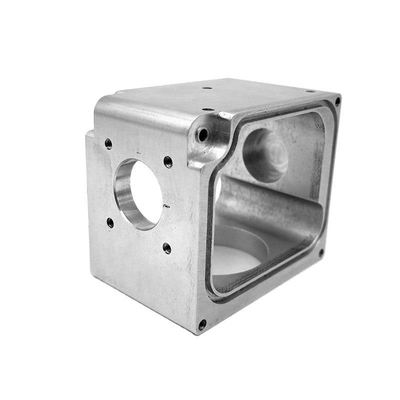Is CNC Machining Hard?

CNC (Computer Numerical Control) machining is a manufacturing process in which pre-programmed computer software dictates the movement of factory tools and machinery. The process can be used to control a range of complex machinery, from grinders and lathes to mills and routers. With CNC machining, three-dimensional cutting tasks can be accomplished in a single set of prompts. The automation provided by CNC systems is a significant evolution from the manually controlled machines of the past, bringing a new level of precision, efficiency, and consistency to manufacturing.
Historical Background
The concept of CNC machining has its roots in the 1940s and 1950s when the first numerical control (NC) machines were developed. These early machines used punched tape technology to control the movements of machine tools. As technology advanced, these machines evolved into the CNC systems we know today, utilizing digital computers to enhance precision and capability.
CNC machining represented a monumental shift in manufacturing. Before its advent, machining was largely a manual process, requiring skilled machinists to operate lathes, mills, and other equipment by hand. The introduction of CNC technology allowed for the automation of these processes, leading to more complex and intricate designs, reduced waste, and faster production times.
Basic Principles of CNC Machining
At its core, CNC machining relies on the principle of computer-controlled movement. The CNC system reads a set of programmed instructions and translates these into precise movements of the machine tool. These instructions are typically written in G-code, a standardized programming language that dictates the machine's movements, speed, and toolpath.
A CNC machine consists of several key components, including the machine tool itself, the controller (which interprets the G-code), and the user interface (which allows operators to input commands and monitor the process). The type of CNC machine used depends on the specific manufacturing task at hand, with common types including CNC mills, lathes, routers, and grinders.
The Learning Curve: Is CNC Machining Hard?
Whether CNC machining is considered "hard" depends on several factors, including one's prior experience, familiarity with related technology, and the complexity of the tasks being performed. For someone new to the field, there is undoubtedly a steep learning curve. The process requires a blend of technical knowledge, practical skills, and problem-solving abilities.
For example, CNC machinists must be proficient in interpreting technical drawings and specifications, understanding material properties, and setting up machines for specific tasks. Additionally, they must learn how to write and modify G-code, troubleshoot common issues, and maintain their equipment. For beginners, this can seem overwhelming, but with proper training and practice, these skills can be developed.
Educational Pathways
Aspiring CNC machinists have several pathways to gain the necessary skills and knowledge. Many begin with formal education, enrolling in technical schools or community colleges that offer programs in CNC machining. These programs typically cover the basics of machining, machine setup, programming, and operation.
In addition to formal education, apprenticeships offer hands-on experience under the guidance of experienced machinists. This on-the-job training is invaluable, as it allows learners to apply their knowledge in real-world scenarios and gain insight into the practical aspects of CNC machining.
Online resources and courses also provide accessible options for those looking to enter the field or advance their skills. Platforms like Coursera, Udemy, and LinkedIn Learning offer courses ranging from beginner to advanced levels, covering topics such as CNC programming, machine operation, and CAD/CAM integration.
Practical Considerations
CNC machining requires a solid understanding of the software used to control the machines. This includes not only the G-code programming language but also the computer-aided design (CAD) and computer-aided manufacturing (CAM) software used to create and optimize toolpaths. Familiarity with these software tools is essential for efficient and accurate machining.
The importance of precision cannot be overstated in CNC machining. Small errors in programming or setup can lead to significant defects in the final product. As such, machinists must pay close attention to detail and maintain a high level of accuracy in their work.
Advanced CNC Machining
As machinists gain experience, they may move on to more advanced aspects of CNC machining, such as multi-axis machining and automation. Multi-axis CNC machines, which can operate along three, four, or even five axes, allow for the creation of highly complex parts with intricate geometries. These machines are commonly used in industries such as aerospace and medical device manufacturing, where precision and complexity are paramount.
Automation is another key area of advancement in CNC machining. By integrating CNC machines with robotics and other automated systems, manufacturers can further increase efficiency and reduce the need for manual intervention. This is particularly relevant in the context of Industry 4.0, where the focus is on creating smart factories that leverage data and connectivity to optimize production.
Challenges in CNC Machining
Despite the many advantages of CNC machining, it is not without its challenges. Common issues include machine malfunctions, tool wear, and programming errors. Machinists must be adept at troubleshooting these problems, often under tight production deadlines.
Maintenance is another critical aspect of CNC machining. Regular maintenance is necessary to keep machines running smoothly and to prevent costly downtime. This includes tasks such as calibrating machines, replacing worn components, and ensuring that all systems are functioning correctly.
Material-specific challenges also arise in CNC machining. Different materials require different cutting tools, speeds, and feeds, and machinists must adjust their processes accordingly. For example, machining a hard material like titanium requires different techniques than machining a softer material like aluminum.
The Role of CNC Machining in Industry 4.0
CNC machining plays a vital role in the ongoing transformation of manufacturing under the umbrella of Industry 4.0. This new era of manufacturing is characterized by the integration of digital technologies, automation, and data analytics to create more efficient and flexible production systems.
In the context of Industry 4.0, CNC machines are often connected to networks that allow for real-time monitoring and control. This connectivity enables manufacturers to optimize their processes, reduce waste, and improve product quality. Furthermore, advances in artificial intelligence (AI) and machine learning are beginning to be applied to CNC machining, leading to even greater levels of automation and precision.
Conclusion
CNC machining is a complex and highly technical field that requires a combination of theoretical knowledge and practical skills. While it can be challenging to learn, particularly for beginners, the rewards are significant. Mastery of CNC machining opens the door to a wide range of career opportunities in industries such as aerospace, automotive, and medical device manufacturing.
In conclusion, whether CNC machining is "hard" depends largely on one's background and dedication to learning. For those willing to invest the time and effort, the challenges of CNC machining can be overcome, leading to a rewarding and fulfilling career in modern manufacturing.
Reprint Statement: If there are no special instructions, all articles on this site are original. Please indicate the source for reprinting:https://www.cncmachiningptj.com/,thanks!
 3, 4 and 5-axis precision CNC machining services for aluminum machining, beryllium, carbon steel, magnesium, titanium machining, Inconel, platinum, superalloy, acetal, polycarbonate, fiberglass, graphite and wood. Capable of machining parts up to 98 in. turning dia. and +/-0.001 in. straightness tolerance. Processes include milling, turning, drilling, boring, threading, tapping, forming, knurling, counterboring, countersinking, reaming and laser cutting. Secondary services such as assembly, centerless grinding, heat treating, plating and welding. Prototype and low to high volume production offered with maximum 50,000 units. Suitable for fluid power, pneumatics, hydraulics and valve applications. Serves the aerospace, aircraft, military, medical and defense industries.PTJ will strategize with you to provide the most cost-effective services to help you reach your target,Welcome to Contact us ( sales@pintejin.com ) directly for your new project.
3, 4 and 5-axis precision CNC machining services for aluminum machining, beryllium, carbon steel, magnesium, titanium machining, Inconel, platinum, superalloy, acetal, polycarbonate, fiberglass, graphite and wood. Capable of machining parts up to 98 in. turning dia. and +/-0.001 in. straightness tolerance. Processes include milling, turning, drilling, boring, threading, tapping, forming, knurling, counterboring, countersinking, reaming and laser cutting. Secondary services such as assembly, centerless grinding, heat treating, plating and welding. Prototype and low to high volume production offered with maximum 50,000 units. Suitable for fluid power, pneumatics, hydraulics and valve applications. Serves the aerospace, aircraft, military, medical and defense industries.PTJ will strategize with you to provide the most cost-effective services to help you reach your target,Welcome to Contact us ( sales@pintejin.com ) directly for your new project.

- 5 Axis Machining
- Cnc Milling
- Cnc Turning
- Machining Industries
- Machining Process
- Surface Treatment
- Metal Machining
- Plastic Machining
- Powder Metallurgy Mold
- Die Casting
- Parts Gallery
- Auto Metal Parts
- Machinery Parts
- LED Heatsink
- Building Parts
- Mobile Parts
- Medical Parts
- Electronic Parts
- Tailored Machining
- Bicycle Parts
- Aluminum Machining
- Titanium Machining
- Stainless Steel Machining
- Copper Machining
- Brass Machining
- Super Alloy Machining
- Peek Machining
- UHMW Machining
- Unilate Machining
- PA6 Machining
- PPS Machining
- Teflon Machining
- Inconel Machining
- Tool Steel Machining
- More Material





